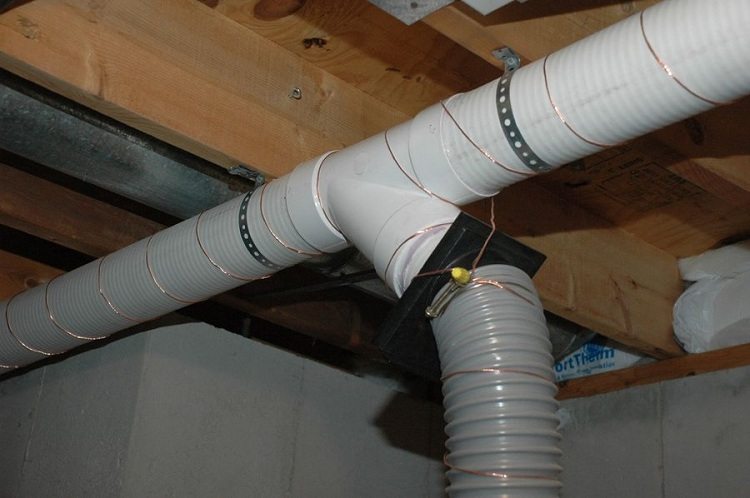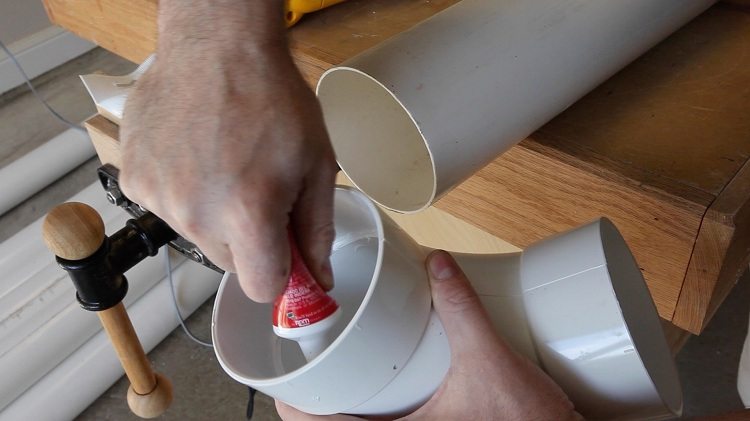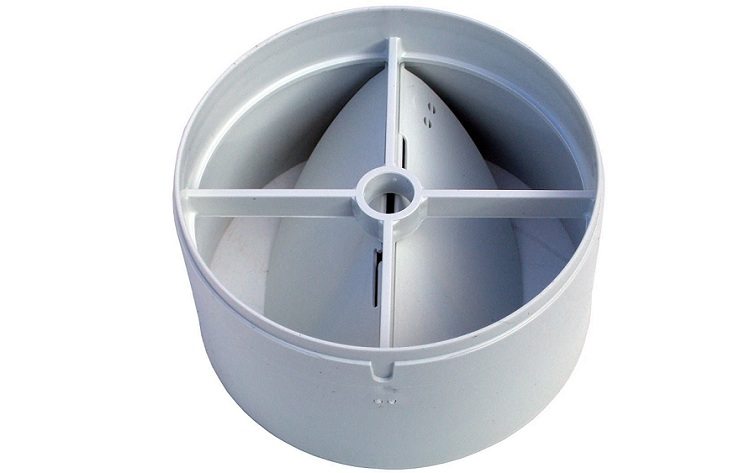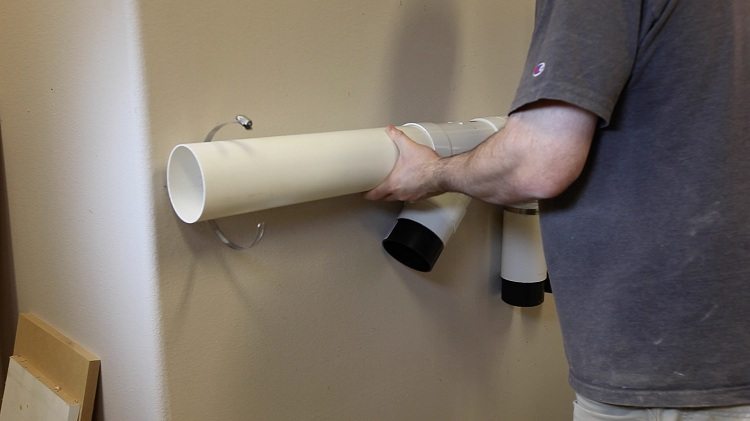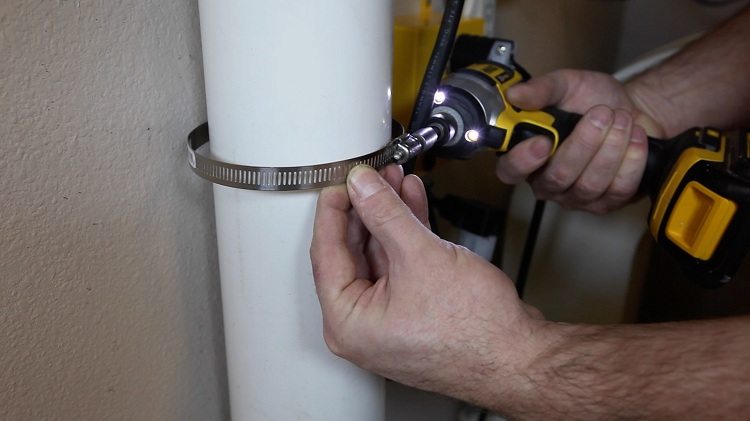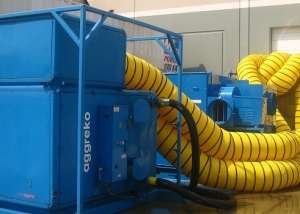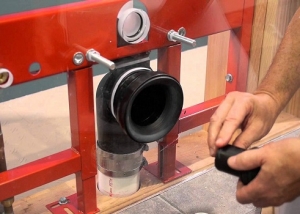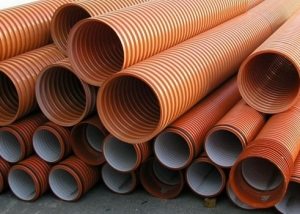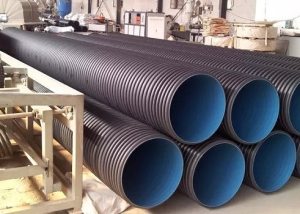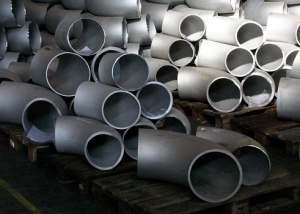Plastic ducts are widely used both in industrial premises and in residential buildings. Their popularity is due to the incredible practicality and high strength characteristics. Ventilation pipes can have round, square and rectangular cross-section. They are used for natural or forced ventilation, removal or injection of gases. Plastic ducts confidently displace their galvanized counterparts.
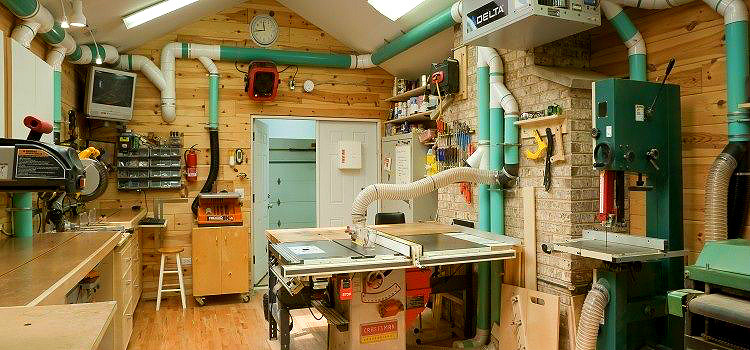
Ventilation systems made of plastic pipes are used in rooms for various purposes - residential, industrial and other
Content
Fields of application
Ventilation of this type is arranged in restaurants, cafes, bars, fitness clubs, gyms and other places with a large crowd of people. After all, plastic pipes produced by modern industry meet all sanitary and hygienic standards. And their aesthetic appearance will not discord with the interior of any style.
Home use. Household ventilation was previously created on the basis of galvanized iron pipe products. Such a technical solution is currently outdated. Today, the production of the following varieties of plastic ducts has been established:
- polypropylene;
- polyurethane;
- polyvinyl chloride (PVC).
The most common are PVC pipes, which are of light or medium type. Of their advantages, it is worth highlighting:
- easy to hygienic clean;
- installation of ventilation pipes made of polyvinyl chloride does not cause any difficulties;
- absolutely tight;
- resistant to the negative effects of UV radiation.
In addition, these products are harmless to human health.
But it was not without flaws. Pipes from any plastic do not cope well with thermal effects, especially if the ambient temperature approaches the polymer's melting point. That is why ventilation systems for baths and saunas are still mounted from metal.
Returning to the advantages of polymer ducts, it should be noted that the production of ventilation pipes from plastic is thought out so that there are no seams, roughness and ribbing on the inner surface. In addition, one of the mandatory stages of the technological process is the treatment of these products with an antistatic agent, which results in the extinction of static electricity, which is why dust is not attracted to the surface. Therefore, there is no need to regularly clean the cavity of the plastic tubular products.
Industrial application. Today it is very difficult to name the type of industrial production, wherever plastic pipes are used for ventilation. Moreover, the features of each stage of the technological process of production are taken into account even at the stage of designing systems that maintain the required sanitary and hygienic conditions of the air in the premises.
Important! In production halls with a temperature critical for the polymer (from + 80˚), industrial ventilation pipes made of plastic cannot be installed.
Then an alternative option is possible - the creation on their basis of an external ventilation system passing outside the heated room in the open air.
Duct section
The main criterion for choosing the cross-section of the ducts is the features of their intended location. You don’t have to go far for examples. So, for installation in a small space between the ceiling and the main ceiling, flat-oval ducts are excellent because they are easy to install in hard-to-reach places. By design, these products are similar to circular ventilation ducts. Flattened shape is attached to them at the production stage on special machines. Due to their shape, flat oval ducts are easily placed in the space of the false ceiling. And such pipes, which are in visible places, are significantly superior in appearance to analogues of other forms.

Oval or rectangular pipes are more convenient to hide under the decoration of the room, but you will have to do additional sound insulation
To this it should be added that ventilation pipes with a flat oval cross-section create resistance to air flow much less than rectangular or square, which makes air masses move more easily, and the unit providing the hood spends much less energy. The increased cost of such products is fully consistent with the quality of ventilation. Therefore, air ducts of this form are in high demand today. The market economy could not help but notice this trend: a flat oval ventilation pipe is an obligatory commodity item present on the shelves of any building supermarket.
In country houses and cottages, the pipe products under consideration have found application in gravity-based conditioning systems and, in addition, in systems for supplying warm air masses and heating. For high-quality installation, manufacturers of air ducts have launched the production of various fittings and fittings, with which individual sections of the hood are overlapped. When used correctly, it is possible to connect several air ducts into one continuous network.
In addition, there is a large selection of fasteners on sale that provide strong and reliable fastening on a vertical surface (meaning walls). Provided that these fixing parts are correctly selected, the home master can not only improve the appearance of the ventilation system, but also save space. The joints are sealed with special sealants, thanks to which the air flow does not go outside at the joints.
Currently, the air ducts with rectangular and square cross sections are most widely represented on the building materials market. Such outlines are more familiar, but to the detriment of practicality:
- During the transport of air through the profile pipe, additional noise is produced.
- The presence of right angles prevents the free movement of air flows, which leads to a decrease in ventilation turnover.
Advice! To eliminate the first drawback, install a GTR silencer in a rectangular or square ventilation duct. Aerodynamic noises will then be absorbed by a special soundproofing material present between the external galvanized and internal perforated casing of the device.
As for round pipes, according to manufacturers, their configuration contributes to the free movement of air flow through the system and therefore such products are more practical. But convenience is only characteristic of a pipeline running in a straight line. Installation of such pipes without additional fittings is not possible. These parts will allow you to create tight turns and bends.
The generally accepted minimum cross-section of a round ventilation pipe is 150 mm. One of the criteria used to select such pipe products is the degree of resistance to wind exposure. Outwardly ventilating system elements must cope with gusts of wind up to 25-30 m / s., Otherwise, to prevent possible damage, it will be necessary to increase its cross section.
Pipe sizes are selected taking into account requirements for operation in residential premises. They must provide the following volumes of air flow:
- per 1 square. m area not less than 3 m³;
- or 60 m³ \ hour for permanent residents and 20 m³ \ hour for visitors staying indoors for a short time.
To select the diameter of the ventilation pipe, you can use the data from the table below.
Table 1
| Diameter, millimeters | Air consumption (cubic meters) at speed (meters per second) | |||||
| 1 | 3 | 6 | 8 | |||
| 500 | 797 | 2120 | 4239 | 5652 | ||
| 450 | 572 | 1717 | 3434 | 4578 | ||
| 400 | 452 | 1356 | 2713 | 3617 | ||
| 355 | 356 | 1068 | 2137 | 2849 | ||
| 315 | 280 | 841 | 1682 | 2243 | ||
| 280 | 222 | 665 | 1329 | 1772 | ||
| 250 | 177 | 530 | 1060 | 1413 | ||
| 225 | 143 | 429 | 858 | 1145 | ||
| 200 | 113 | 339 | 678 | 904 | ||
| 180 | 91,6 | 275 | 549 | 732 | ||
| 160 | 72,3 | 217 | 434 | 579 | ||
| 140 | 55,4 | 166 | 332 | 443 | ||
| 125 | 44,2 | 132 | 265 | 353 | ||
| 100 | 28,3 | 84,8 | 170 | 226 | ||
For greater accuracy, you can use the formula for calculating the diameter of the ventilation pipe. First, it calculates what the channel cross-sectional area should be. The source data is the amount of exhaust or supply air required for delivery to the room. Having learned the value of this parameter from SNiP, we substitute it in the following formula:
P = P / (3600 * C), where:
P - the cross-sectional area of the duct, m²; P - air flow, m³ / hour; C is the speed of the air flow in the channel, m / s.
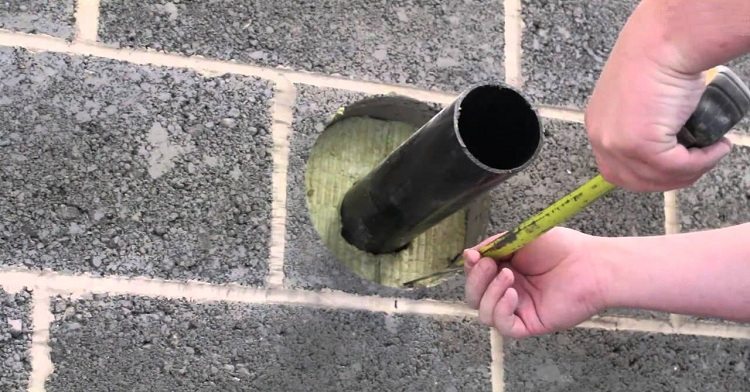
The diameter of the ventilation duct depends on the area of the room and the norms of air consumption
The number 3600 is used to link time units (hours and seconds). And how the diameter of a circle is calculated by its area is known from a high school mathematics course.
D = ²√ 4π/π = 2²√π / π = 2, where:
D is the desired diameter of the duct; π is a well-known irrational constant, approximately equal to 3.14.
Plastic ventilation elements
Polymer material is used to produce not only air ducts, but also all shaped elements. In addition to the pipes themselves, the following accessories will be required.
Transition. This item is needed:
- to ensure the connection of two ventilation ducts with different cross-sections (we already know that it is not only round);
- when you need to connect two ducts with the same cross-sectional shape, but of different sizes.
Outwardly, transitions from plastic for ventilation resemble a truncated pyramid (when connecting two rectangular / square ducts) or a truncated cone (when round ducts are joined). In rooms characterized by complex geometry, when it is impossible to install pipes on one axis, transitions with offset are used.
Note! The use of such parts is appropriate where the displacement of the two duct elements is not very large and it makes no sense to lay an additional pipe section between them.
Non-return valve. This device is one of those that can eliminate some problems with the functioning of ventilation and improve it. Most often, the duct is equipped with a check valve to eliminate the effect of backdraft.
For example, an extractor hood of such high power is mounted in the kitchen that the process of removing contaminated air from this room is accompanied by the disappearance of draft in other rooms. As a result, an air environment harmful to the health of housing dwellers accumulates there. The installation of a check valve solves this problem. Its design includes a frame with a blade fixed on the axis, which opens the channel in only one direction. With normal draft, nothing interferes with the air exchange. When reverse thrust occurs, the duct closes. If the draft level in the channel is constantly small, valves of this type can serve as control dampers.
Other accessories. In addition to the above, the following components will be needed for plastic ventilation:
- lattice. They close the exit from the ventilation duct to the room;
- tees. Such shaped elements will be needed to organize complex branches of the ventilation system. Their use requires a careful approach to calculating the performance of the entire structure created. Especially critical is the case of convergence at one point of two ventilation ducts. In this case, it is necessary to ensure that they do not "pull" each other;
- hatches. The installation of these elements facilitates access to communications;
- bends. Used to organize a smooth change in the direction of the duct at an angle of 90 °.
Mounting Features
Installation of ducts is not particularly difficult. The initial assembly of the elements is carried out on a table or floor, after which the assembly is attached to the wall or suspended from the ceiling. The assembly of components into one design is carried out according to the following methodology: couplings are used to connect straight sections, and shaped elements are interconnected by nipples. This method is called the "nipple coupling." Shaped components are made by cutting pieces of the required length from straight sections. The need to create these elements with this method lies in the fact that the face of the ventilation systems has pipes of a slightly larger diameter so that the direct channels enter it very tightly. Therefore, for joining, for example, an outlet and a tee, a short straight pipe is needed. After the final connection of the elements, it is hidden inside the nozzles.
Important! Proper ventilation requires covering with sealant before joining each joint. This will prevent air suction through existing leaks.
For the same reason, professionals do not recommend using screws to fasten parts, as inexperienced installers often do. And builders love in this way love to fasten rectangular plastic pipes. After all, it is not only more convenient and faster, but also cheaper. This approach is erroneous. So that the channel at the docking points does not let air through, installation must be done on sealant.
In an effort to save on fasteners, contractors screw the plastic pipe directly to the suspension or bracket using the same screws. This is also an incorrect approach. Correct installation of the plastic duct is carried out on a pipe clamp tightly enclosing. The mounting element of this type is equipped with a rubber gasket and is ideally suited for organizing fastening to a bracket on a wall or a hanging pin.
Suspension studs should be selected taking into account the required length. It is recommended to fix them to the floor slab with anchors. However, it is allowed to use other fasteners. There are clamps in the form of latches, as well as plastic brackets that make installing the ventilation system cheaper and easier.
The installation of silencers does not provide for the use of any special tools. You can do without:
- with a sharp knife. Sometimes scissors may be required;
- side cutters. If you don’t have one at hand at the moment, use ordinary wire cutters;
- indelible felt-tip pen;
- protective gloves. They will be required during the work with thermal insulation.
Sealing plastic ducts
Home masters opt, as a rule, for water-based sealants or solvent-based. But each species has its advantages and disadvantages. The advantages of water-based materials include:
- may be applied to a damp surface without prejudice to the level of tightness;
- the possibility of applying with a brush;
- long service life;
- absolute harmlessness to humans and the environment;
- incombustibility;
- timelessness.
The solvent based sealant has the following attractive properties:
- it can even be applied on slightly oily surfaces;
- allows work in any weather;
- hardens very quickly;
- when dry, does not ignite.
Important! ATOn wet conditions, this type of sealant is subject to burning.
To seal the joints, it is also possible to use mastics. However, they must be selected taking into account the conditions characteristic of the further operation of the ducts.
In addition, there are sealing tapes. Their subdivision into species is carried out according to the following criteria:
- the basis. In general, the base is aluminum, cloth, polyethylene and polyvinyl chloride. For plastic ducts, it is recommended to use the last two types of tapes;
- adhesion level. Adhesive tapes are divided into butyl, silicone, acrylic and bitumen;
- appointment. According to this criterion, these products are of the following types: adhesive tape (adhesive tape), electrical insulating tape and kiper tape.
Lining is made with silicone impregnated paper.
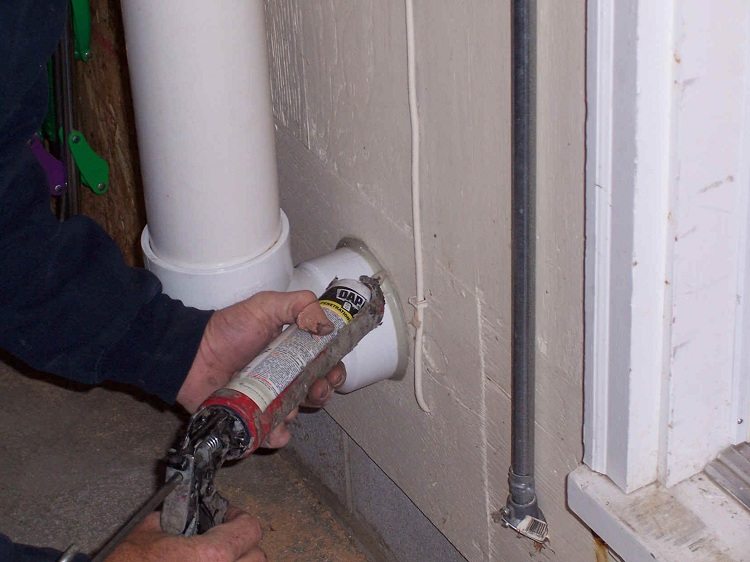
Sealing of ventilation ducts is carried out not only at the junctions of the elements, but also where the pipe passes through the wall or ceiling
Leading duct manufacturers
The manufacture of plastic ventilation pipes is within the scope of many domestic and foreign companies. This factor has led to intense competition in this segment of the building materials market. The abundance of nomenclature positions cannot but please the end consumer. But preference should be given only to the products of time-tested manufacturers. Below are some of them.
- VTS Clima (Poland). The company was founded in 1989. For less than 30 years of existence, it has opened representative offices in 15 states of Eurasia and Africa. The company produces equipment for air conditioning and ventilation systems, as well as accessories for them. One of the priority areas is the production of flexible ducts. The popularity of the products of this brand in the domestic market is due not only to its high quality, but also to the fact that all products have a 3-year warranty.
- Systemair (International Group of Companies). The head office of this conglomerate is located in Sweden in the city of Sinskatteberg. Its products can be purchased in 60 countries of the world. In Russia, it is sold, mainly in the Leningrad region, with the greatest demand recorded in St. Petersburg. The production of equipment that meets the requirements of ISO 14001 - this is what the emphasis is on. This means that environmental safety is at the forefront of this brand. The main direction is the integrated production of systems that support the required sanitary and hygienic conditions of the air in the premises. Moreover, the diameter of the ventilation pipes can be very different. That is, depending on the required volume of air mass to be removed, they can be operated not only in an apartment or private house, but also in a production workshop.
- Arktos (Russia). This enterprise is one of the Russian manufacturers specializing in the production of equipment for air conditioning and ventilation systems. Today, there are two large plants of this company, located in St. Petersburg and Moscow. A survey is carried out in the research laboratory of acoustics and aerodynamics.
The main sign of proper installation of the ventilation system is that when the weather is cold outside, the windows do not fog up. If this phenomenon is observed, it is possible that mistakes were made at the design stage.
